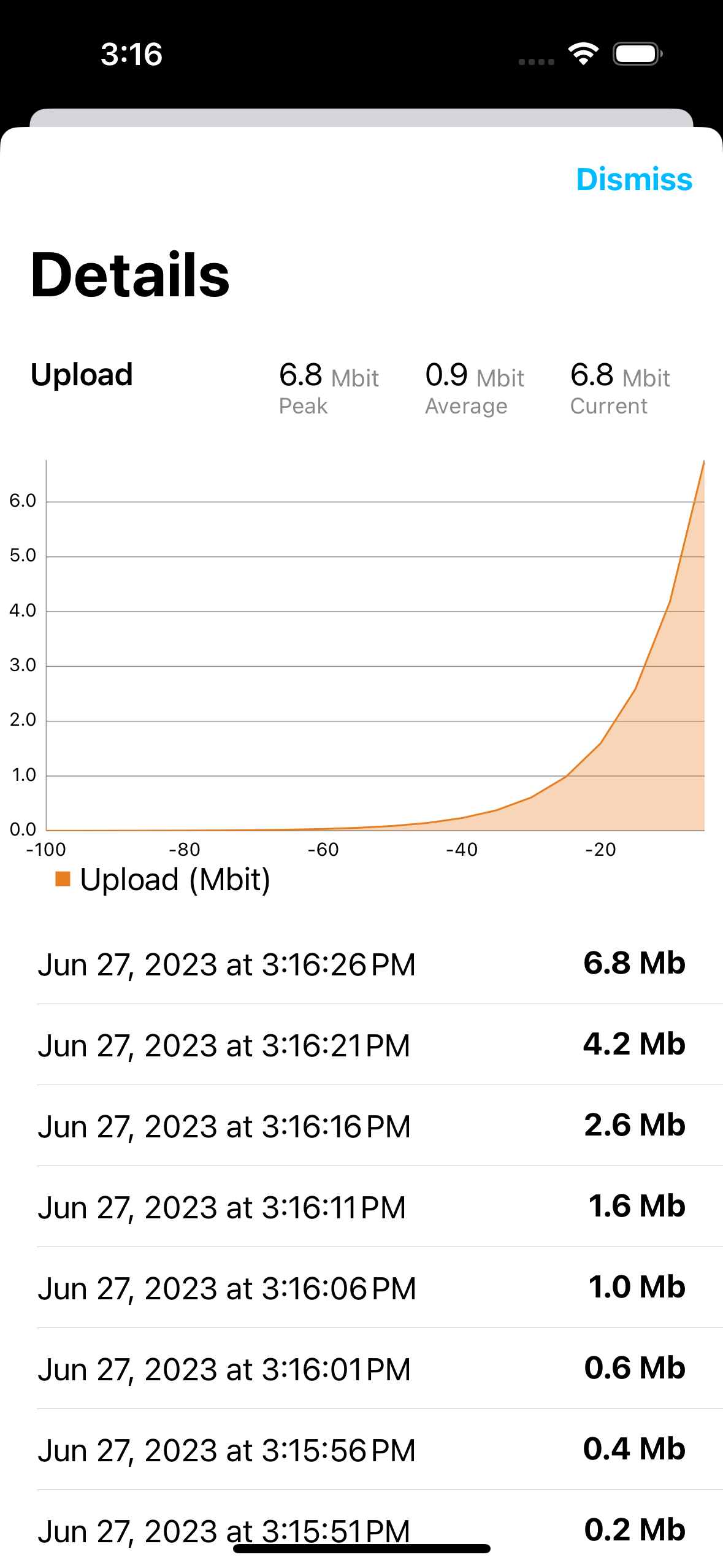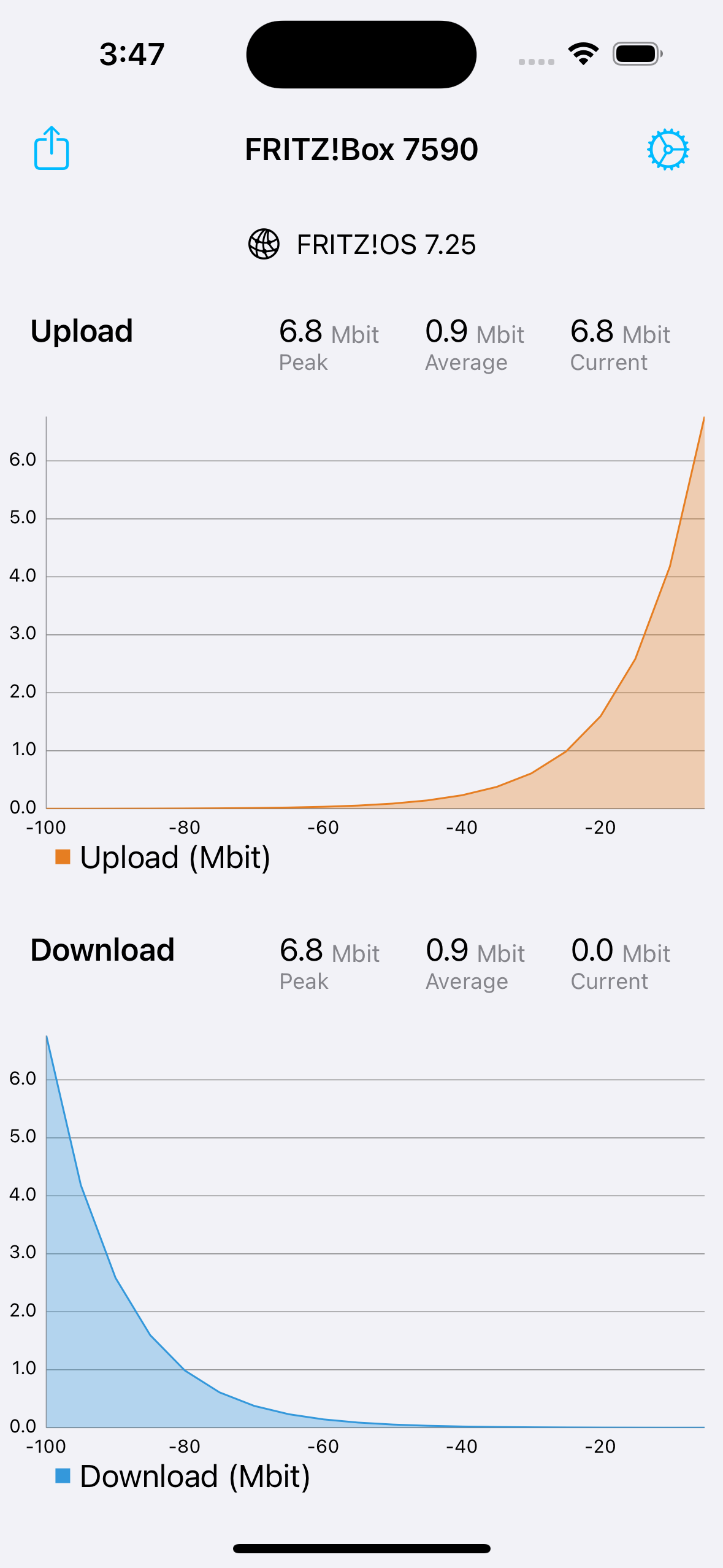After two years in the making, Bandwidth Monitor has been released in version 2.1.0. Of course, I wasn’t actively developing throughout the entire time. Most of the features were done every now and then, whenever I got the time for it.
Version 2.1.0 includes a few features and quality of life improvements that did not make it into the initial 2.0.0 release.
First up, it is now possible to long-press on a graph to see a list of values. This allows you to dig into the detailed values over time. It will update over time as well, as the bandwidth values continue to be updated in the background.

Detailed list of bandwidth values for a graph
Second, on the main screen I added the value for the average bandwidth value of a graph over the displayed time period. In addition, you’ll notice that it now shows you the OS version of the FRITZ!Box you are connected to.

Main view showing bandwidth graphs and values
A big improvement is the UPnP SSDP discovery process when adding new hosts. Previously, the app relied on the fact that your router was usually accessible via the fritz.box hostname. If it wasn’t, you could only add yours by hand by typing in its IP or hostname.
Now, if you are on the same network, the app will search for devices that might be supported and show them to you in the list. This allows you to easily add multiple routers on the current network, if needed.
Note that this feature is dependant on the multicast address being available. This is due to the way NWMulticastGroups are currently implemented in iOS. So if you have other apps that implement the SSDP protocol they might be blocking it unintentionally.
As long as you update to version 2.1.1, it will not stop you from adding hosts as usual, though.
There are a few more new preferences like being able to explicitly set the stay-on behavior of the app. Previously, the app would always keep the screen awake as long as you were charging. Now, you are in full control and can even leave the screen on all the time with Bandwidth in the foreground.
The last thing I’ll touch on is support for Guided Access. It is a feature designed to limit the use of your device to a single app. There are a few use cases, like handing your phone off to a stranger or presenting it in a kiosk scenario. Either way, when the app detects that you are running in Guided Access it will disable the preferences and share buttons so that the person in front of the device is unable interact with anything else than the graph data itself.
I hope to be able to put more work into the app in the near future and am looking forward to hearing your feedback.
